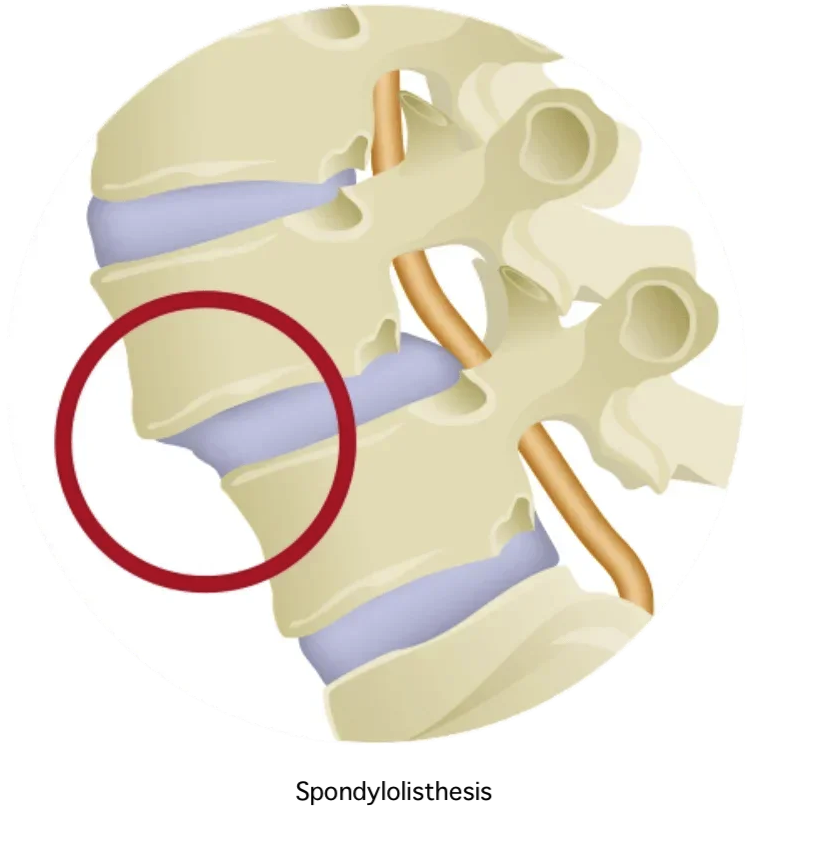Column Block Injections Don’t Work! Why Block Injections Are Not Effective For Spondylolisthesis
Lumbar spondylolisthesis is a condition in which the vertebrae in the lower back move out of their normal position.
Spondylolisthesis causes symptoms such as lower back pain, pain and numbness in the buttocks and lower legs. If the symptoms are severe, it can affect your daily life.

Block injection as treatment for spondylolisthesis
Treatment for spondylolisthesis includes conservative treatment and surgery, but many people continue to receive block injections to avoid surgery.
A block injection uses a local anesthetic to numb the nerves that are causing the pain, making you feel no pain.
It is a treatment that many people rely on because it has a high analgesic effect and is fast-acting.
However, are block injections really effective for spondylolisthesis?
Why block injections are not effective for spondylolisthesis
The effect of block injection is to temporarily relieve the pain, and it will not improve the spondylolisthesis.
Reasons why block injections are not effective include:
– Temporary pain relief; once the anesthesia wears off, the pain will return.
– Spondylolisthesis has progressed and block injections are not indicated.
・Block injections are not expected to be effective in cases where separation syndrome is also present.
Block injections can be given when symptoms are mild. If spondylolisthesis has progressed and neurological symptoms are occurring, block injections are often ineffective.
It is important to keep in mind that mild spondylolisthesis is often asymptomatic, and if symptoms begin to appear in the lower back or lower extremities, the spondylolisthesis has often progressed. Even if you receive a block injection in this condition, no effect can be expected.
What to do when block injections don’t work
So, what should you do if you have been diagnosed with spondylolisthesis and block injections have not worked?
Surgical operation
If symptoms do not improve and persist for a long time, surgery is generally suggested.
A typical surgery for spondylolisthesis involves making an incision in the back under general anesthesia, removing the facet joints or discs, and fixing the unstable lumbar vertebrae.
If the slipped spine is corrected, the symptoms will improve, but in general, surgical procedures come with various risks.
Rehabilitation
Symptoms can be expected to improve by correcting daily activities through specialized rehabilitation and improving posture that leads to pain.
You can improve the symptoms of spondylolisthesis by being careful about the way you sit, sleep, and walk, avoid movements that put strain on your lower back, and do stretching exercises every day.
The important thing here is to continue with rehabilitation.
Treatment at our clinic, The Cellgel Method
The cause of spondylolisthesis is believed to be intervertebral disc degeneration. *1
Therefore, we believe that fundamental treatment cannot be achieved unless the degenerated intervertebral disc is repaired.
*1 Reference source: I. Akkawi, H. Zmerly. Degenerative spondylolisthesis: A Narrative Review . Acta Biomedica, vol. 92, No.6, 2021.

At our clinic, we perform the Cellgel method for spondylolisthesis caused by degeneration of intervertebral discs.
With our clinic’s Cellgel method, we inject a drug that fills the cracked part of the intervertebral disc, and it turns into a gel to repair the crack, making it possible to perform fundamental treatment. The disc volume does not decrease, and the drug remains in the disc as a gel-like implant after treatment, so the disc is preserved.
Unlike traditional surgery, the Cellgel method does not involve any incisions, so there are fewer postoperative risks.
The hospital stay is only half a day, and you can walk home on the day of treatment.
If you are suffering from back pain or have been diagnosed with spondylolisthesis, please consider having a consultation at our clinic.



